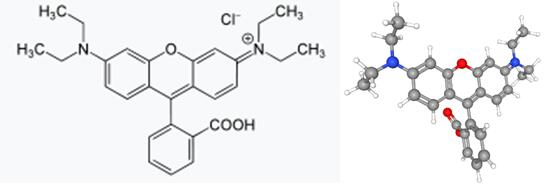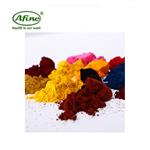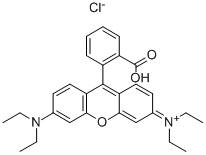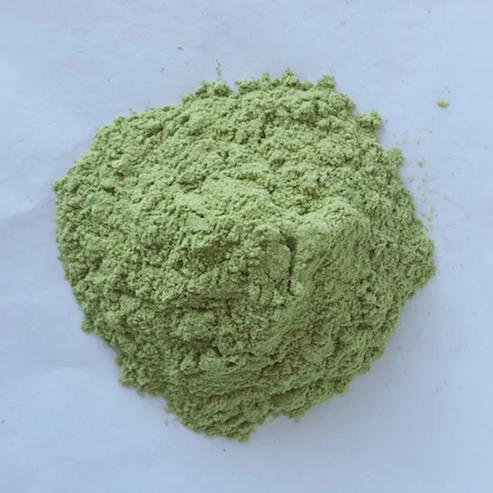Applications of Rhodamine B
Rhodamine B is an organic chloride salt having N-[9-(2-carboxyphenyl)-6-(diethylamino)-3H-xanthen-3-ylidene]-N-ethylethanaminium as the counterion. An amphoteric dye commonly used as a fluorochrome. Rhodamine B has a role as a fluorochrome, a fluorescent probe and a histological dye. Rhodamine B is an organic chloride salt and a xanthene dye. Rhodamine B contains a rhodamine B(1+). Rhodamine B is a chemical compound and a dye. Rhodamine B is often used as a tracer dye in water to determine the rate and direction of flow and transport. Rhodamine dyes fluoresce and can thus be detected easily and inexpensively with fluorometers. Rhodamine dyes are used extensively in biotechnology applications such as fluorescence microscopy, flow cytometry, fluorescence correlation spectroscopy and ELISA.

Fig 1. Chemical structure formula and three-dimensional structure of Rhodamine B
Rhodamine B is used in biology as a staining fluorescent dye, sometimes in combination with auramine O, as the auramine-rhodamine stain to demonstrate acid-fast organisms, notably Mycobacterium. Rhodamine B is tunable around 610 nm when used as a laser dye. Its luminescence quantum yield is 0.65 in basic ethanol, 0.49 in ethanol, 1.0, and 0.68 in 94% ethanol. The fluorescence yield is temperature dependent[1-5].
Rhodamine B is exempted from the requirement of a tolerance when used as a dye in accordance with good agricultural practice as inert (or occasionally active) ingredients in pesticide formulations applied to animals.
Rhodamine B is being tested for use as a biomarker in oral rabies vaccines for wildlife, such as raccoons, to identify animals that have eaten a vaccine bait. The rhodamine is incorporated into the animal's whiskers and teeth[6].
Rhodamine B induces a concentration-dependent reduction of root meristem cells of A. cepa. mitotic activity. Rhodamine B induces various nuclear aberrations in A. cepa. root cells. In the 100 and 200 ppm rhodamine B groups, the frequencies of NBUDs and BN surpass those of the positive control (MMS) group. Rhodamine B-induced changes of H2O2 and MDA level increase in a concentration-dependent manner in A. cepa[7].
References
[1] Kubin, R (1982). "Fluorescence quantum yields of some rhodamine dyes" (PDF). Journal of Luminescence. 27 (4): 455–462.
[2] Casey, Kelly G.; Quitevis, Edward L. (1988). "Effect of solvent polarity on nonradiative processes in xanthene dyes: Rhodamine B in normal alcohols". The Journal of Physical Chemistry. 92 (23): 6590–6594.
[3] Kellogg, R. E.; Bennett, R. G. (1964). "Radiationless Intermolecular Energy Transfer. III. Determination of Phosphorescence Efficiencies". The Journal of Chemical Physics. 41 (10): 3042.
[4] Snare, M (1982). "The photophysics of rhodamine B". Journal of Photochemistry. 18 (4): 335–346.
You may like
Related articles And Qustion
Lastest Price from Rhodamine B manufacturers

US $8.00/kg2024-01-04
- CAS:
- 81-88-9
- Min. Order:
- 1kg
- Purity:
- 99%
- Supply Ability:
- 2000

US $0.00/kgs2023-12-12
- CAS:
- Min. Order:
- 100kgs
- Purity:
- 100% strength
- Supply Ability:
- 50 tons



